The wonderful thing about the terrarium hobby is the many ways to be creative and conjure original and beautiful work.
It is a niche that lies at the intersection between nature, art, and science.
Therefore, it’s a field ripe for experimentation and where new ground is constantly broken.
So, I thought compiling some of my favorite ways to innovate your designs (with these twelve unique terrarium ideas) would be a good idea.
Whether you find an idea you would like to emulate or another that serves as inspiration – there is a little something for everyone on this list, so stick around.
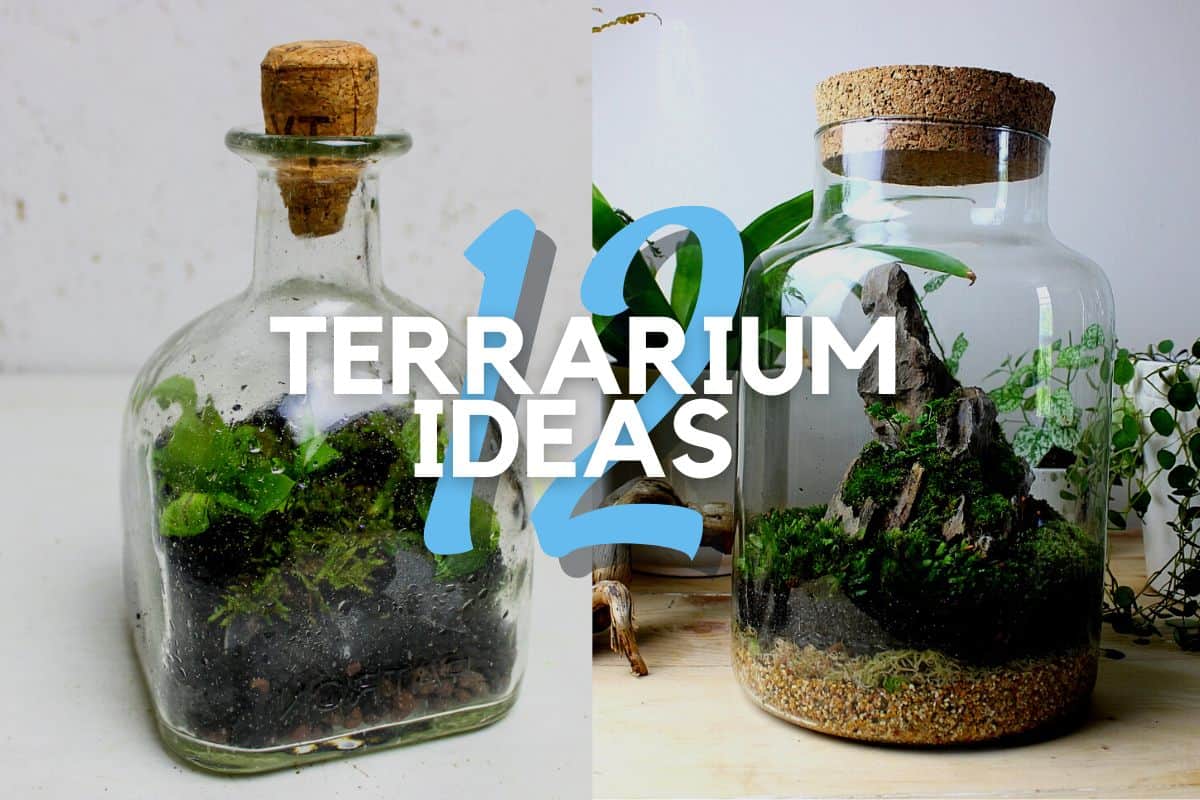
Terrarium Tribe is reader-supported. When you purchase through links on our site, we may earn an affiliate commission (at no further cost to you). 💜
12+ Cool Terrarium Ideas
1. Tiny Terrarium
A fun, readily accessible way to enjoy the terrarium craft is to experiment with tiny terrariums.
Just how small can you go, you ask? As small as you like!
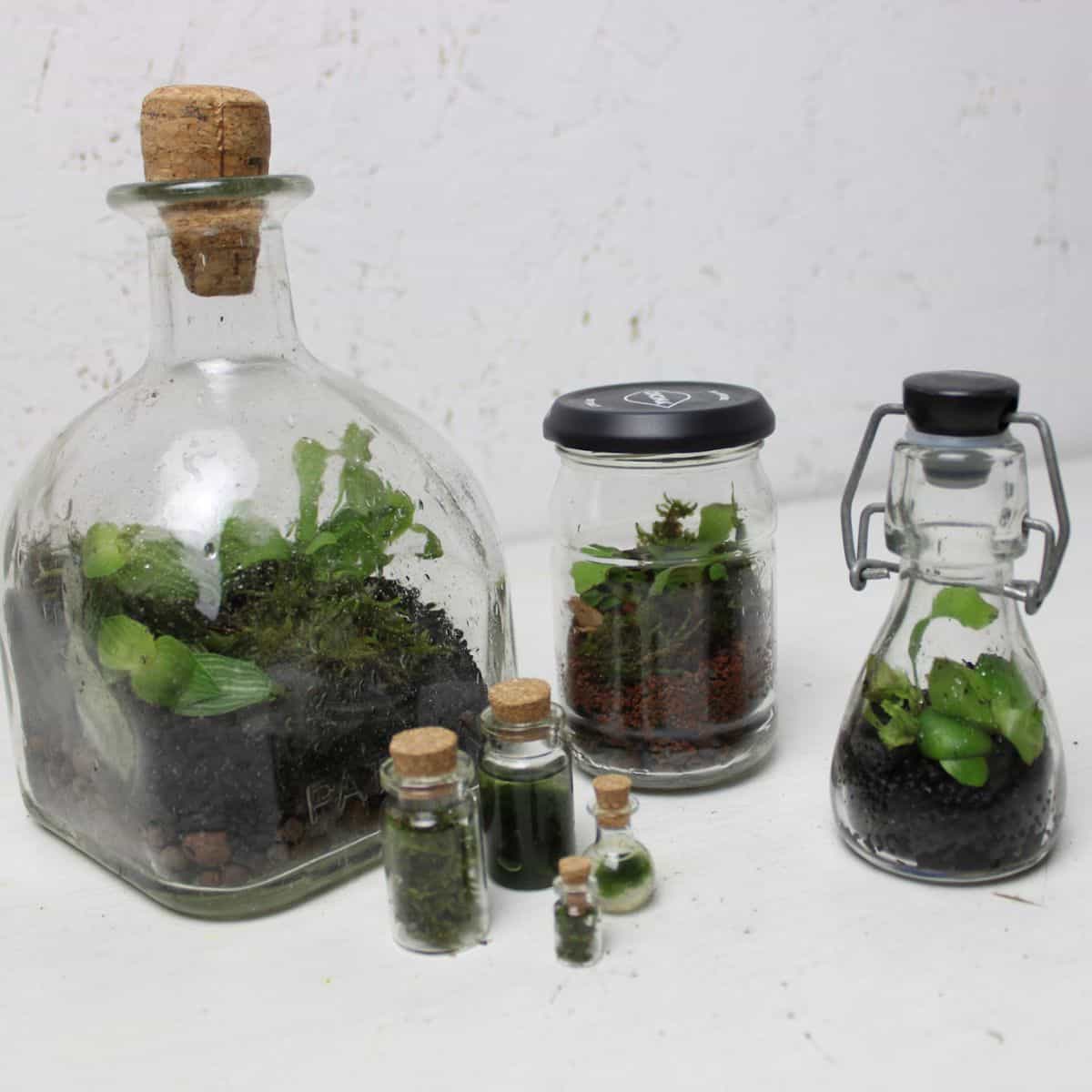
Although a tiny terrarium sacrifices volume and some detail, they can be created much quicker and easily fit inside the nooks and crannies of your mantelpieces or worktops.
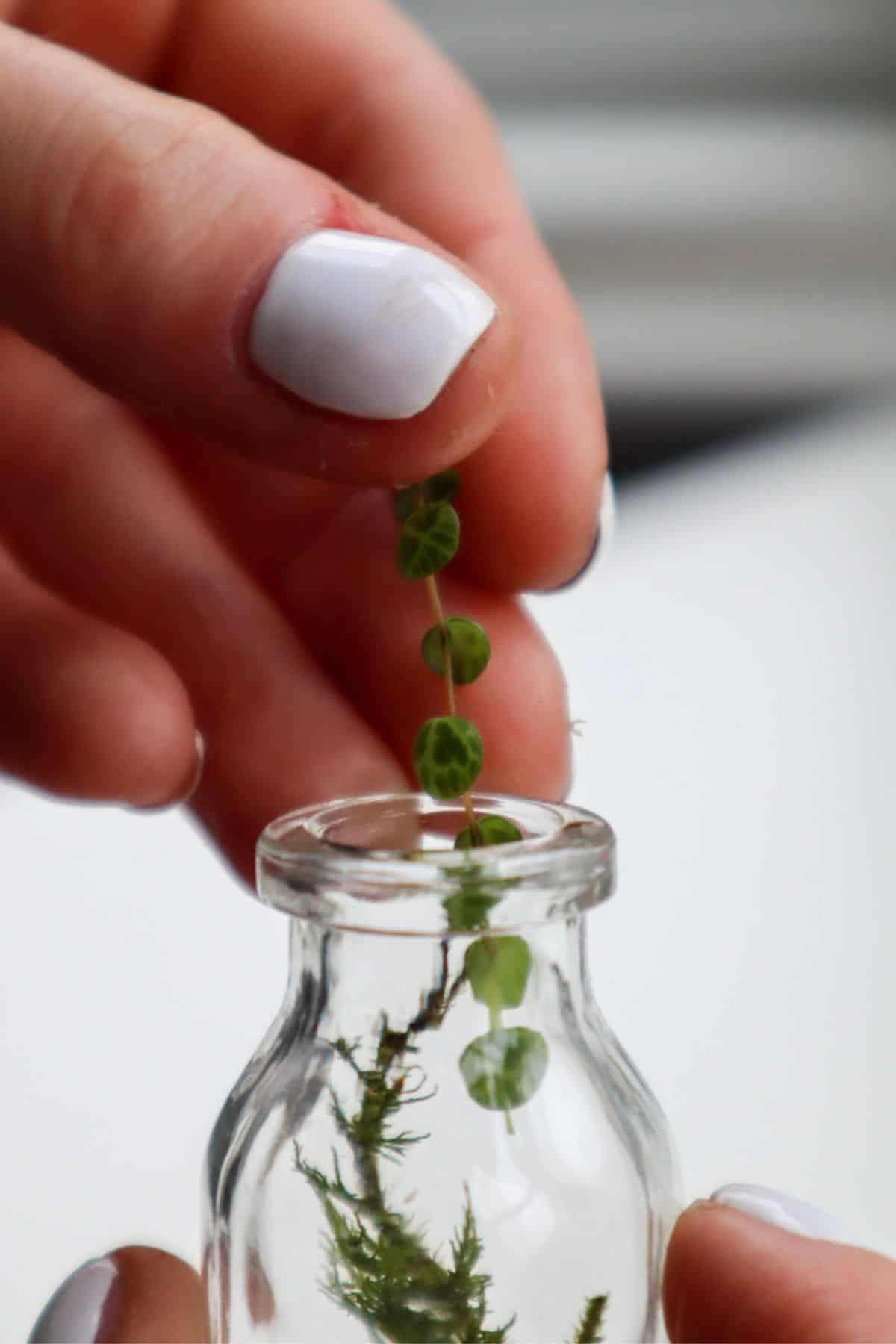
👉 Read more: 5 Tiny Terrariums to Try Today.
2. Moss Terrarium – AKA Mossarium
Someone who hasn’t dipped their feet far into the botanical pool will probably pay little attention to the tiny green wonders that adorn our forests and streets.
For those initiated, such as yourself, moss becomes un-unnoticeable.
Verdant and fluffy, moss is the most vital component you can include inside a terrarium. It transforms the misshapen and dull into the full and vibrant.
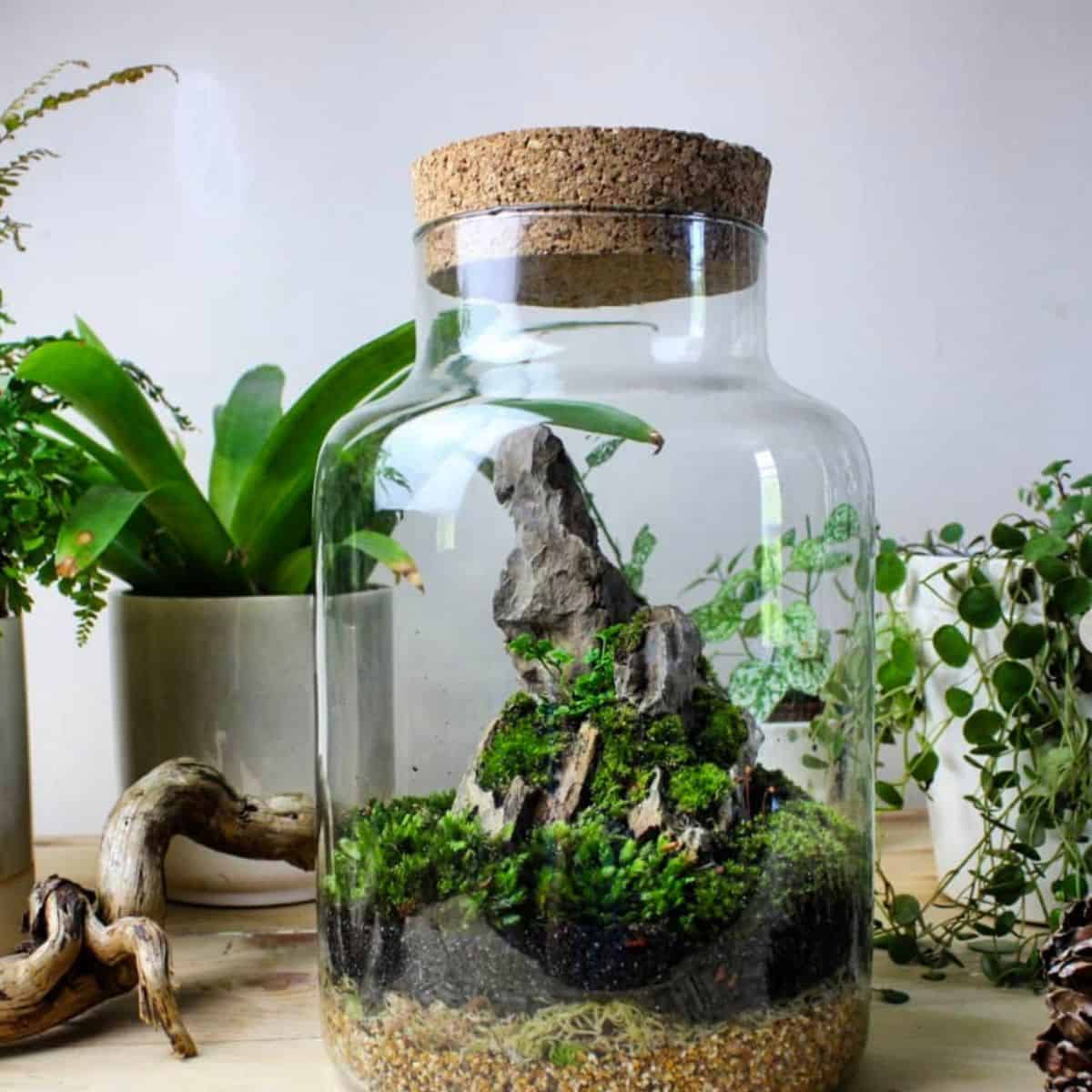
This, we call the mossarium: a celebration of the underappreciated bryophyte.
Learn how to put moss at the center of your design, take proper care of it, and reap its aesthetic delights.
👉 Shop our collection of live terrarium moss.
3. Sand Art Terrarium
Layering different materials within a closed terrarium is one of the most popular methods to create a proper foundation for your flora.
One of those materials, at least, will need to provide a drainage function to relieve your roots of excess water. Be it Leca, aquarium gravel, or sand.
Sand, however, has a secondary function. Another art form has found itself intertwined with the terrarium hobby.
Sand art.
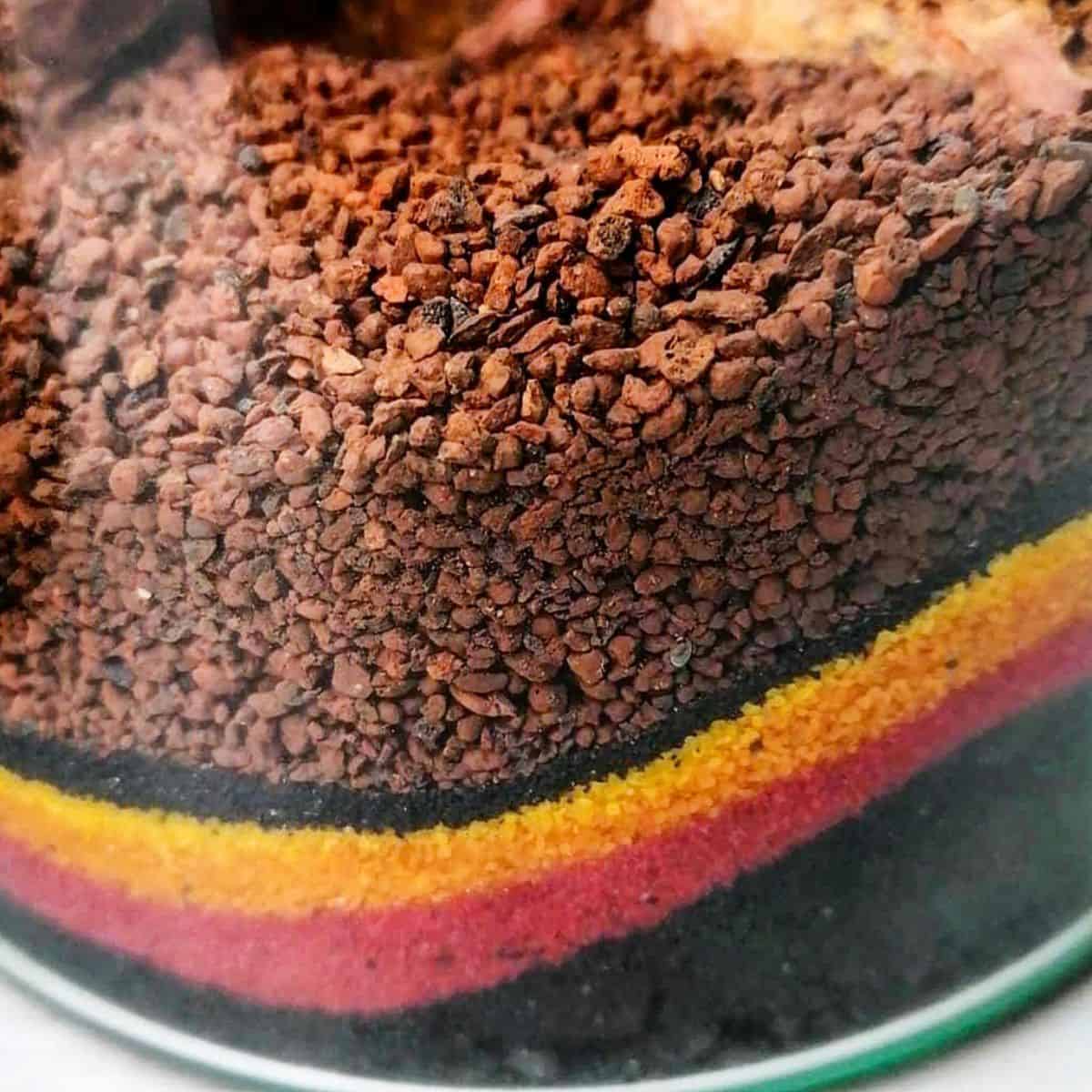
It takes a little practice, and you’ll need to be careful about overwatering – vigorous watering can upset your patterns, but it’s worth it.
With a little time and patience, you can add an entirely new layer (pun intended) of artistry to your work.
👉 Read more: Terrarium Sand Guide.
Or, shop colored sand on Etsy.
4. Foraged Terrarium
For many, the fun in building terrariums lies in solving challenges and being resourceful. So what better way to build a terrarium than by using materials around you?
The key to a good foraged or native terrarium is to find and use elements close to hand.
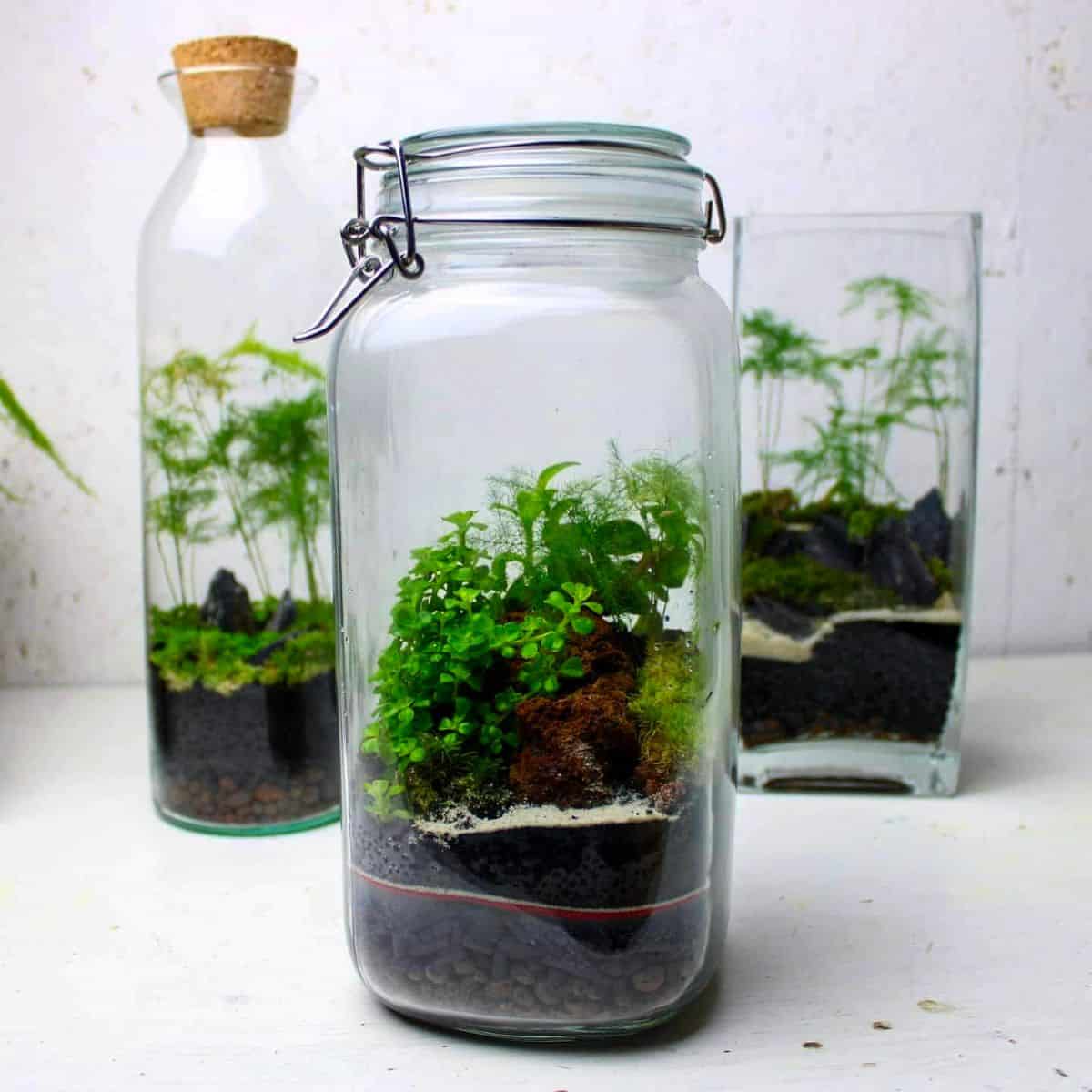
In most cases, other layering materials can be found in your home/garden.
A shallow layer of gravel should be easily sourced from the outside world. Old BBQ charcoal can serve as a charcoal layer and houseplant cuttings as plants.
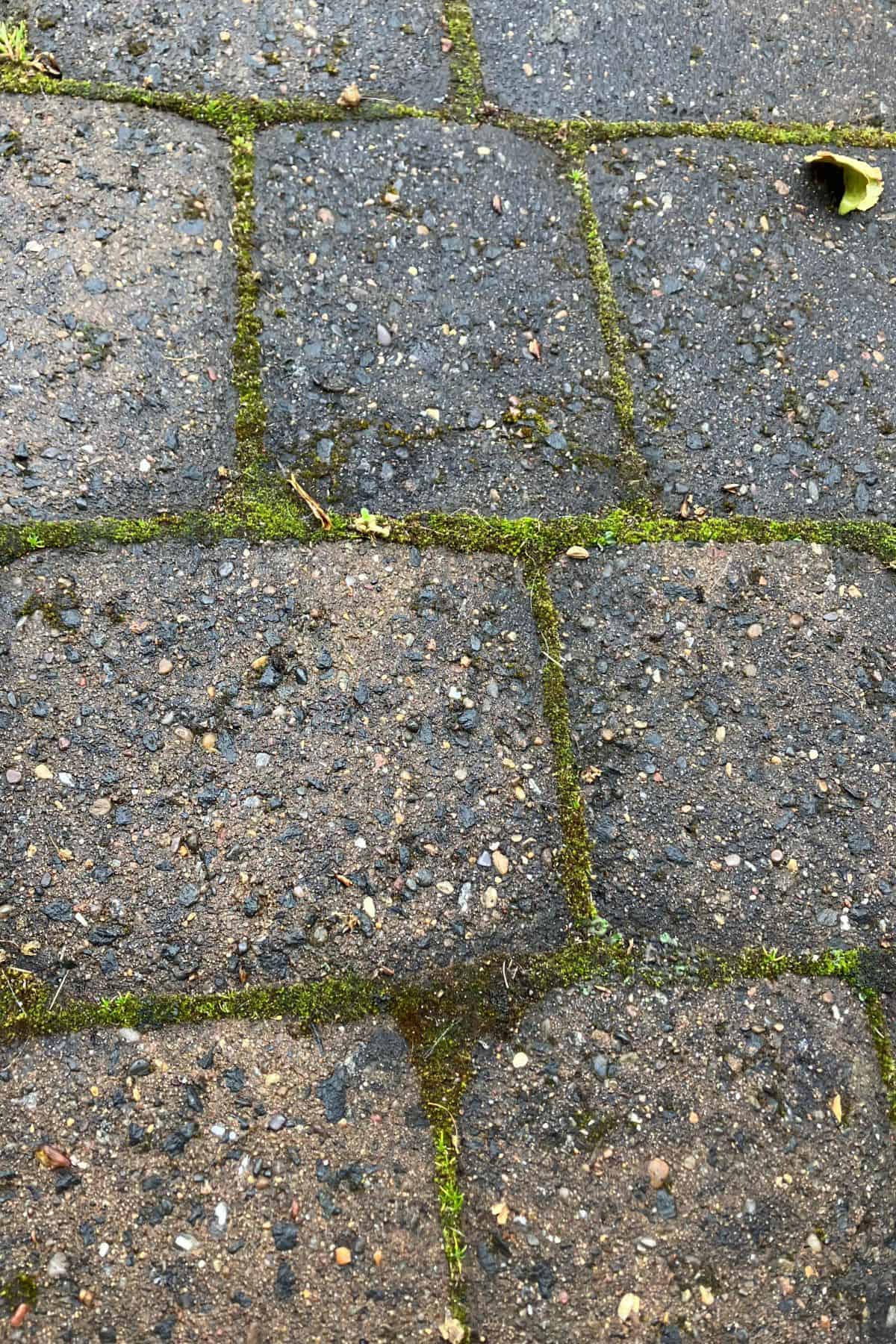
The only thing you’ll need to source properly is your terrarium substrate/soil.
A terrarium made using potting soil or native soil almost certainly won’t – so I recommend grabbing a bag of our specialist terrarium soil mix from our shop.
5. Open Terrarium
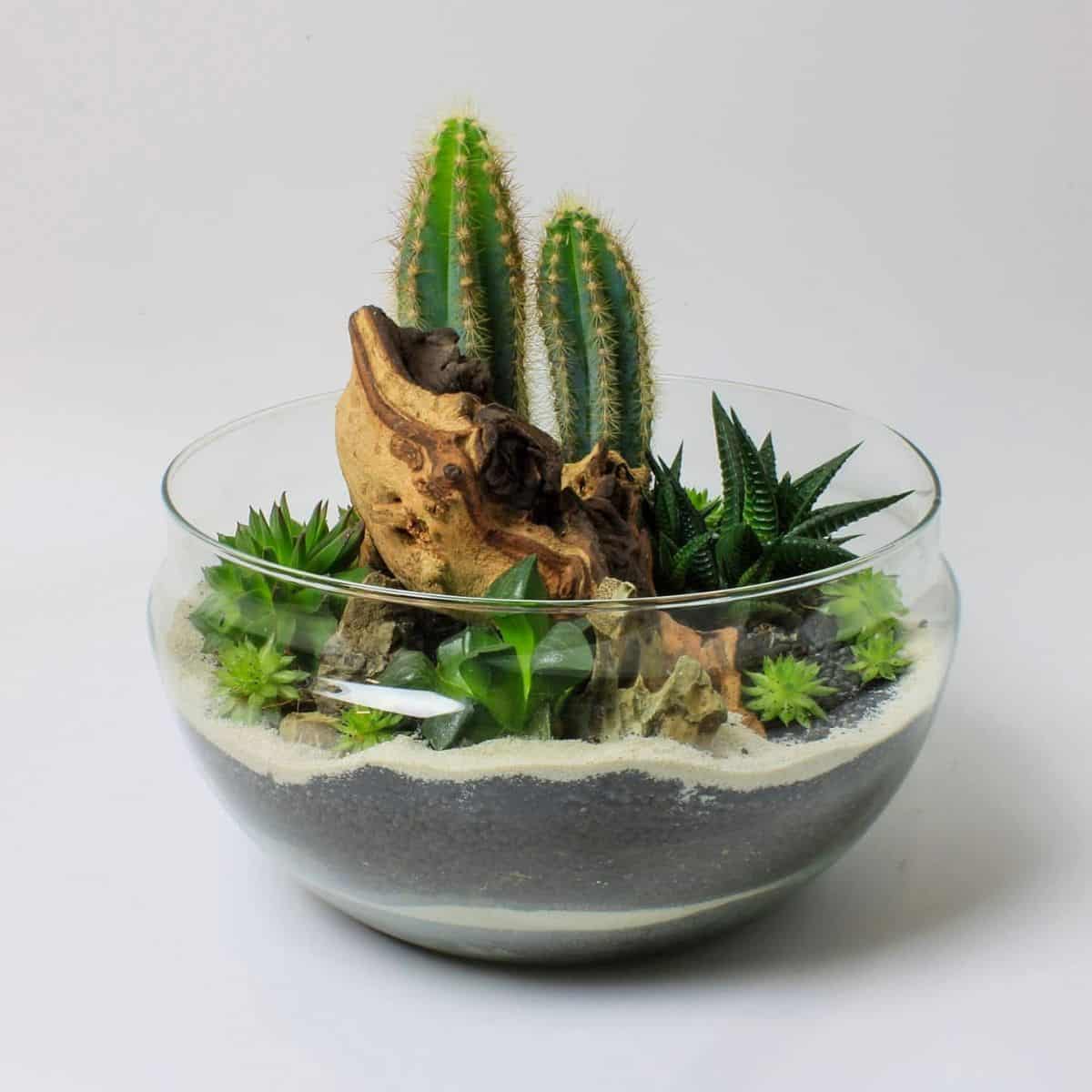
Visually striking and somewhat easy to build, an open terrarium (perhaps more accurately referred to as a planter) is a lidless glass container that typically hosts cacti and succulents instead of tropical plants.
And while simple to construct, they have completely different care requirements to a closed terrarium, and ensuring their longevity can be tricky.
All of which can pose an exciting new venture to tropical terrarium old-hands.
Not to mention if you’ve run out of spots with bright indirect light, this terrarium will gladly sit in full sun.
👉 Read more: See our articles on How to Make an Open Terrarium or the more specific Cactus Terrarium and Desert Terrarium guides.
6. Environment Themed Terrarium
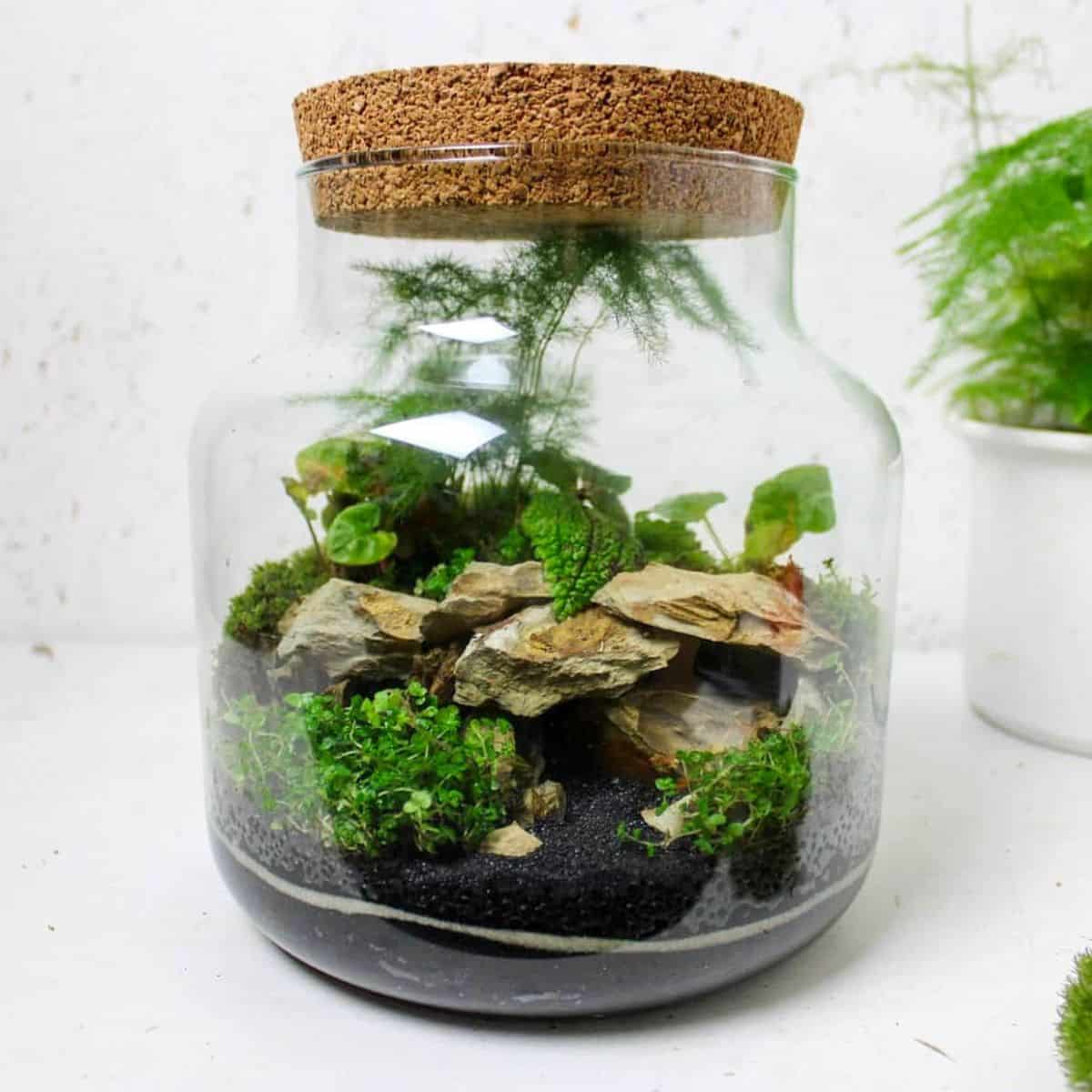
The self-sustaining systems inside terrariums operate similarly to our ecosystems on Earth.
A wonderful way to give your terrarium more of that worldly feel is to design an environment-inspired or to-scale scene inside.
You could create a beach terrarium, a mountain terrarium, a rainforest terrarium, or a ravine terrarium.
Natural hardscape is going to be your best friend here.
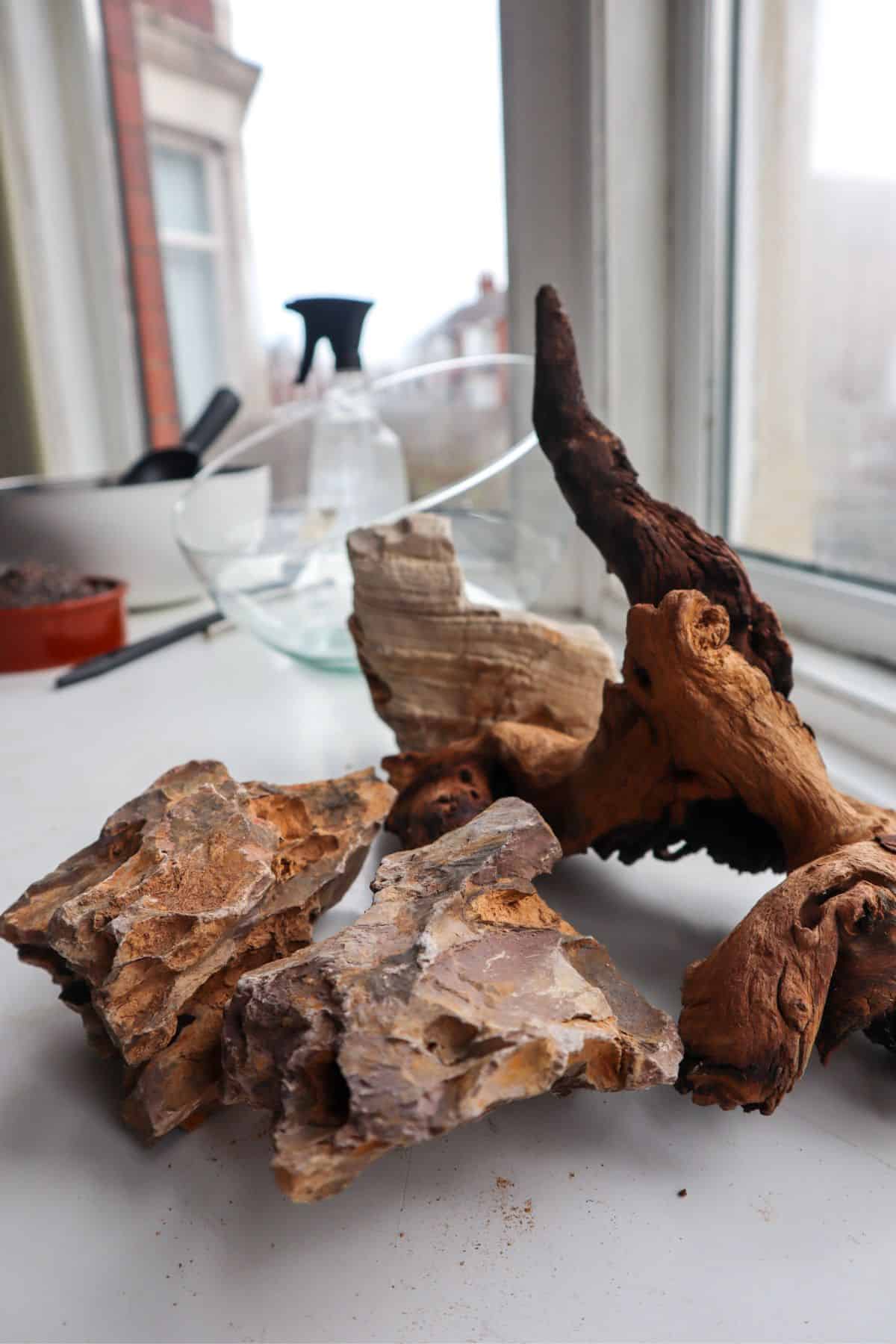
There are a few things you need to pay attention to, such as the size of plants used and the positioning of your decorative rocks to ensure a satisfying, realistic visual.
Other than that, this is one of the most accessible ways to quickly elevate your design towards something eminently impressive.
👉 Read more: 10 Terrarium Themes.
7. Terrarium Lamp
To best enjoy your magnificent micro-world, the right lighting is paramount.
Conventional methods of lighting up your scene are all well and fine, but a terrarium lamp is something quite different and particularly stunning.
Moreover, the low-level light can support your terrarium, providing enough light to keep your ecosystem healthy – dependent on the bulb.
It will take a little bit of technicality, but not nearly as much as you may expect.

👉 Read more: Terrarium Lamp DIY Guide.
8. Hanging Glass Terrarium

Why not experiment with the aesthetic adventure of housing your terrarium from up high?
It allows light to pass through easily, thus creating a gorgeous display in an area of your choosing.
They can, too, free up some surface area, especially if you’ve gone a little terrarium-mad and your partner needs some space to chop onions.
Alternatively, a more accessible “hanging” terrarium option is hanging air plants within your terrarium with a little fishing wire to look like it’s levitating. Magic!
👉 Read more: Hanging Terrarium 101.
See hanging terrarium containers on Etsy.
9. Herb Terrariums
There is something exceptionally exciting about the prospect of growing your produce within a terrarium.
Not all garden herbs will thrive within a closed, humid environment, but many annuals, such as basil and chamomile, can.
You can place propagated cuttings inside a terrarium environment, or you may want to attempt growing them from seed.
The great thing about a terrarium is that it can act like a greenhouse – magnifying light and ensuring a consistently humid atmosphere – which is ideal for many herbs.
👉 Read more: Herb Terrarium 101
10. Bioactive Terrariums
Turning your typical tropical terrarium bioactive is an exciting way to fully realize the self-sustaining potential of your ecosystem.
While it sounds like a gigantic feat to pull off, it could be something as simple as adding springtails or isopods.
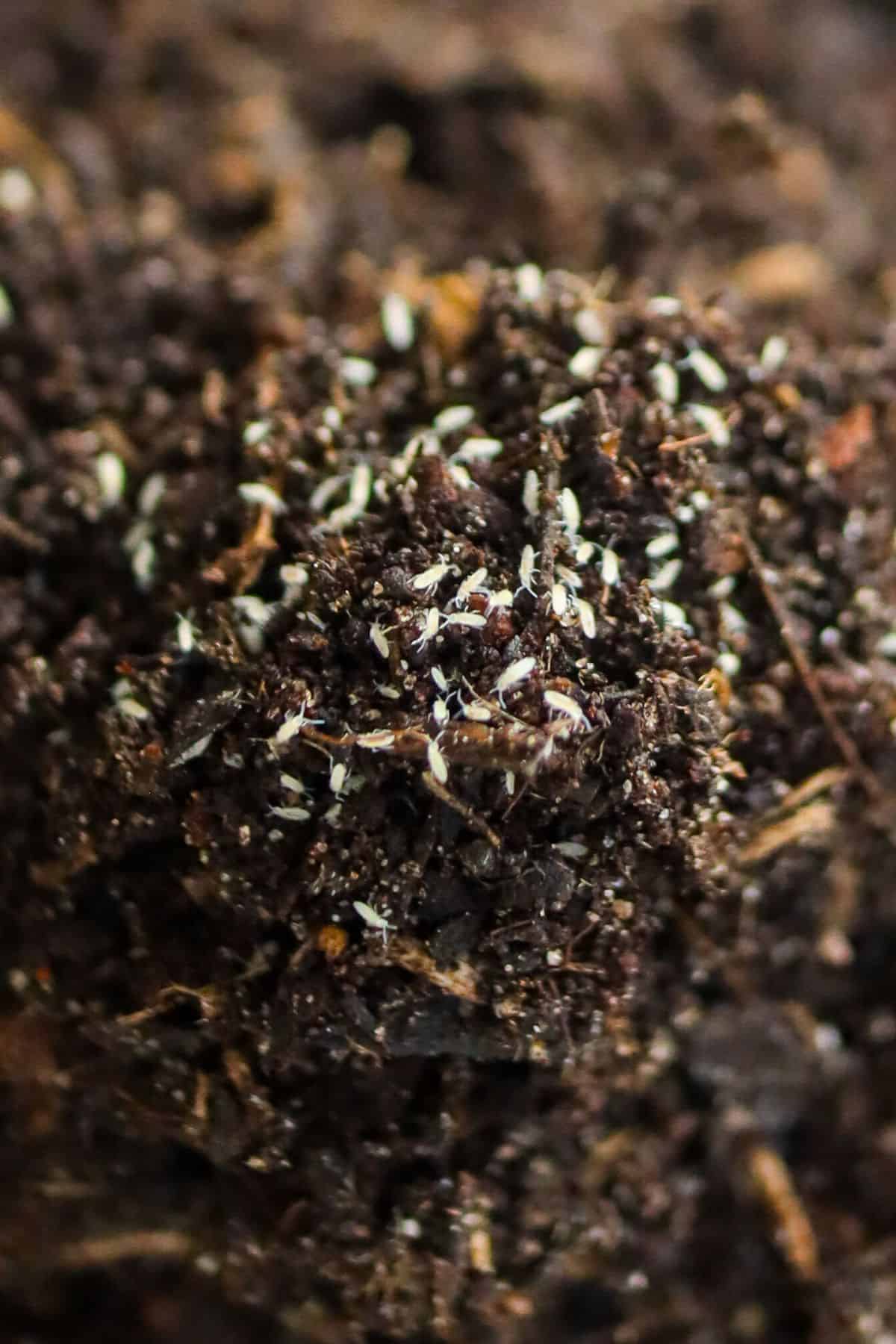

These detritivores are incredible composters.
They feed on decaying organic matter within your ecosystem and return nutrients to the soil that plants can use.
Other but slightly more complex options for larger closed terrariums would be worms and millipedes.
👉 Read more: How to Make a Bioactive Terrarium.
Or, see our range of isopods and terrarium springtails on our shop!
11. Resin Terrarium
Resin is a fairly miraculous material.
In the terrarium world, it can be used to create transparent “fake water,” and it’s a fantastic medium to explore if you want to up your terrarium game.
Often paired with hardscape and living or preserved moss to create a fabulous scene, you can use resin dyes to fully realize your miniature environment.
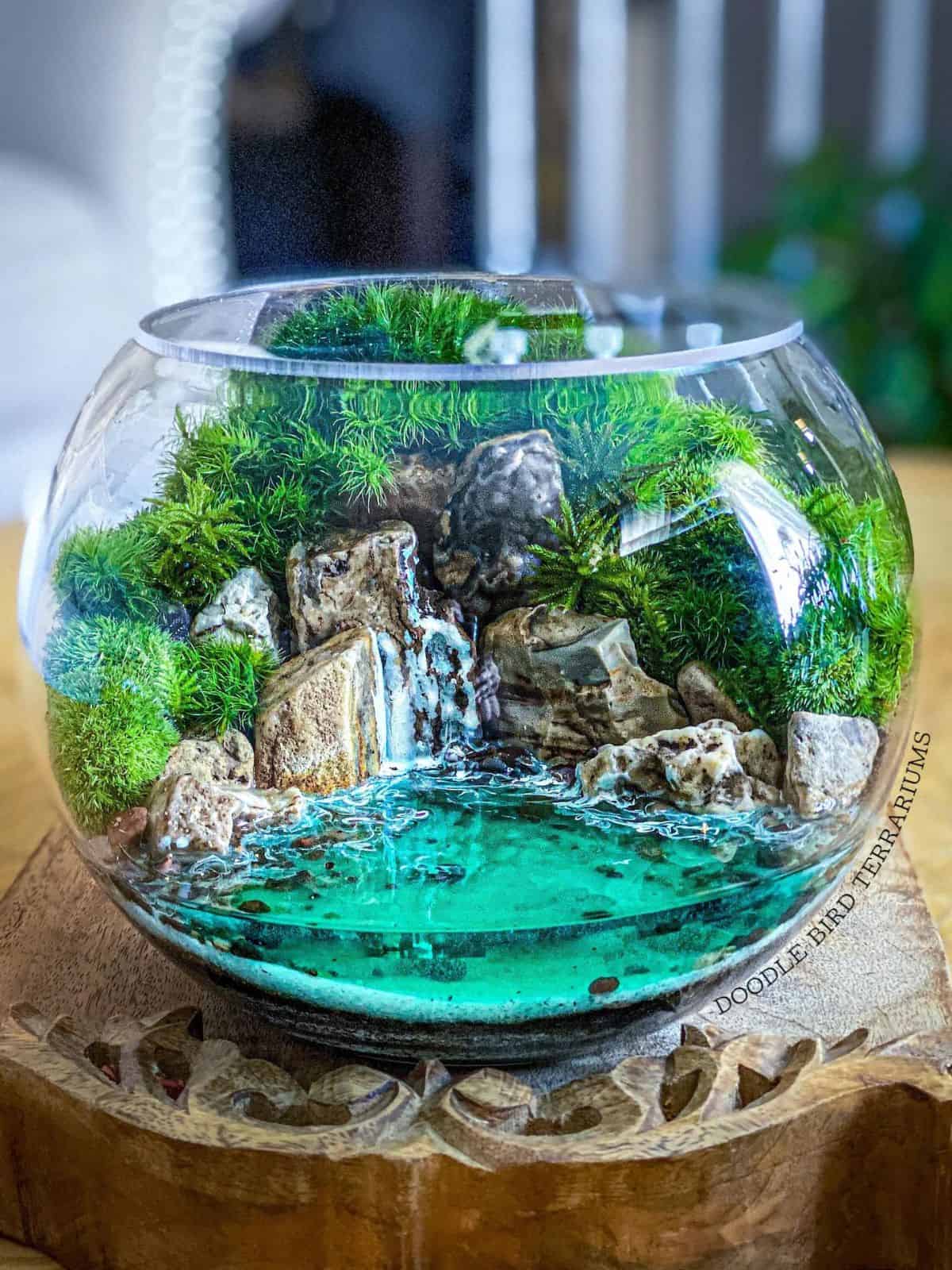
👉 Read more: Resin Terrarium Guide.
12. Terrarium Table
We’ve come to the final frontier, terrarium furniture.
As someone who makes terrariums, I often get suggestions from friends and people I meet.
‘OOH, you could make a terrarium table!’ is one that comes up regularly.
You can use several methods to achieve this, and they’re not all as difficult as you might imagine.
If you’re crafty, the possibilities are endless. And needless to say, the results look fantastic.
👉 Read more: How to Make a Terrarium Table.
There you have it!
They don’t need to be taken individually; you could well combine them.
For example, a tiny foraged and bioactive terrarium is quite possible. Heck, stick it on a hanger, and you’re really on to something.
The point is, don’t be afraid to experiment. It’s nature that we’re celebrating, and the essence of that beauty is variety, not uniformity.
How about trying a classic DIY Jar Terrarium, Light Bulb Terrarium, or Fairy Garden Terrarium?
Have I left anything crucial off this list? If you’ve tried one of these ideas or have one of your own, comment below and let me know.
